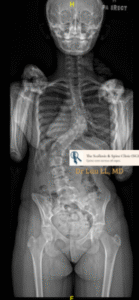Living with Scoliosis: Tips for Daily Comfort and Confidence
Scoliosis care in Singapore (2025) involves more than managing spinal curvature—it’s about empowering patients with daily strategies for comfort, posture, and emotional well-being. This guide offers practical scoliosis tips from a spine specialist to help you live with confidence.
Written by Dr Lau LL
MBBCh (Dublin), MRCS (Edinburgh), MMed (Orthopaedics), FRCS (Ortho)
Senior Consultant Orthopaedic & Spine Surgeon
Singapore —
📧 drlauspineclinic@gmail.com

1. Prioritize Posture
Posture is about alignment, not rigidity. A helpful visual cue is to imagine your head gently balanced at the center of your pelvis—this promotes vertical stacking of the spine and reduces compensatory strain. Whether sitting or standing, aim for a relaxed upright position with your weight evenly distributed.
Scoliosis creates natural asymmetries, and chasing “perfect” posture can lead to frustration. Focus on what feels balanced and sustainable. The goal is not symmetry, but comfort and confidence in your own unique alignment.
2. Choose Movement That Feels Good
Regular stretching helps maintain flexibility and reduce stiffness. Low-impact activities like swimming and planking strengthen core muscles, which are essential for spinal stability. These exercises can be adapted to suit your curve and energy level.
Even five to ten minutes of spinal-based stretching—such as side bends, cat-cow movements, or wall elongation—can improve posture and comfort. The goal is to create space and reduce tension, not force symmetry.
3. Dress for Comfort and Confidence
Soft, breathable fabrics and flexible waistbands reduce pressure on sensitive areas. Layering helps balance visual asymmetry and makes bracing more discreet. Choose outfits that reflect your personality and make you feel strong and confident.
For girls with significant shoulder asymmetry, slipping bra straps can be frustrating. Opt for brassieres with adjustable, wider straps or racerback styles. Silicone strap cushions or clips can improve grip and alignment, helping you feel secure without constant readjustment.
4. Build a Supportive Sleep Setup
Sleep is when your body heals and recovers—so your mattress and pillow setup matters. A medium-firm mattress supports spinal alignment, and side sleepers may benefit from placing a pillow between their knees to reduce rotational strain.
Experiment with pillow height and sleeping positions to find what works best for your curve. Hugging a body pillow or using a wedge cushion can relieve pressure and improve restfulness. Quality sleep supports both physical recovery and emotional resilience.
5. Embrace Your Story and Seek Community
Scoliosis is part of your journey, not your identity. Sharing your experience with trusted friends, family, or support groups can reduce isolation and build confidence. Community offers validation, encouragement, and practical advice.
Elizabeth, a scoliosis patient of Dr Lau and author of the patient guide Embrace, writes:
“I used to hide my curve like a secret. But the moment I shared my story, I found strength—not just in myself, but in others who understood. Scoliosis didn’t break me. It shaped me.”
Writing can be a powerful way to process and validate your feelings. Journaling or blogging helps clarify emotions and track progress. Your story matters—and expressing it, whether aloud or on paper, is a step toward healing and self-acceptance.

🌟 Featured Resource: Embrace by Elizabeth
Written by a scoliosis patient of Dr Lau LL, Embrace is a compassionate guide for anyone navigating life with spinal curvature. Elizabeth shares practical insights, emotional encouragement, and tools to help others feel seen, supported, and strong.
“This book is for anyone who’s ever felt alone in their curve. You’re not broken—you’re beautifully resilient.”
